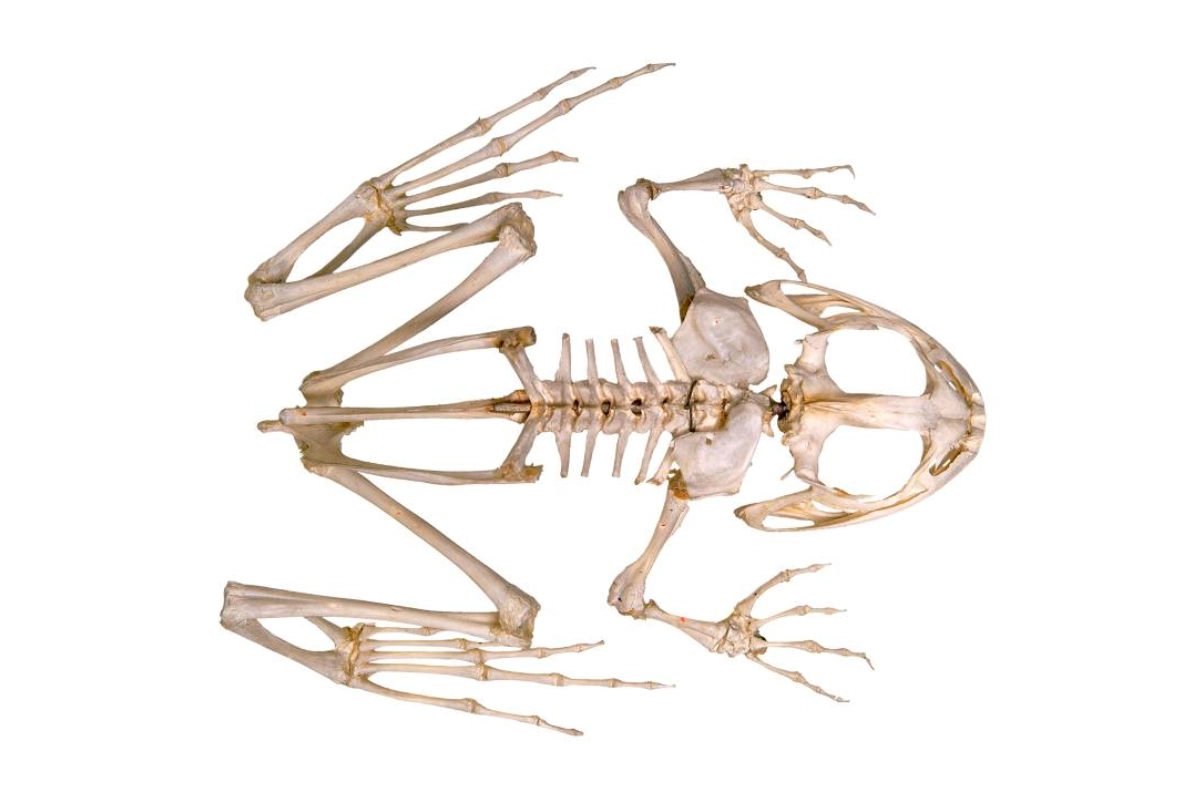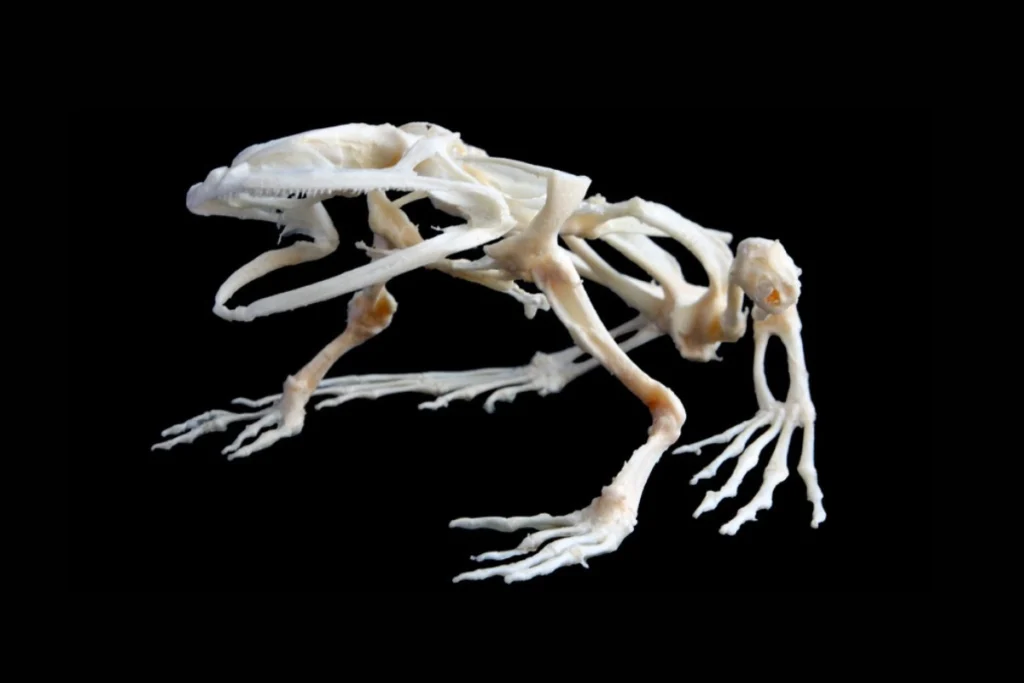Yes, frogs do have a backbone. As vertebrates, they belong to a group of animals characterized by the presence of a vertebral column. This backbone develops as frogs undergo metamorphosis, transitioning from tadpoles to adult frogs. In their tadpole stage, frogs do not yet have a fully formed backbone, but during their transformation, they develop a vertebral column that becomes a crucial part of their skeletal structure.
The backbone provides structural support, enabling the frog to maintain its body shape and move efficiently both on land and in water. It also protects the spinal cord, a critical part of the nervous system that helps coordinate movement and respond to environmental stimuli. Thanks to their backbone, frogs are capable of the strong, agile movements required for jumping, swimming, and escaping predators, which are key to their survival.

Have you ever wondered whether frogs have a backbone or not? Maybe you’re curious about how these amazing amphibians move so effortlessly in water and on land. Does a frog have a backbone or not? It’s a common question, and it makes sense to ask since frogs seem so flexible, and their movements are unique compared to many other animals. Understanding whether or not frogs have a backbone can shed light on their physiology and evolutionary traits. In this article, we’ll answer this question in detail, exploring the fascinating anatomy of frogs and what makes them special among amphibians.
Do Frogs Have a Backbone?
Yes, frogs do have a backbone, which classifies them as vertebrates. Vertebrates are animals that possess a spine or vertebral column, a structure made up of individual vertebrae that provides crucial support to the body. In frogs, this backbone helps maintain their posture, aids in efficient movement, and protects the spinal cord, which is essential for transmitting signals throughout their body. While frogs might appear to lack the rigid structure found in other animals, their backbone is highly specialized, allowing them to be incredibly agile, making jumps and quick turns that are necessary for escaping predators and navigating complex environments.
The Backbone’s Role in Frog Anatomy
The backbone plays a critical role in the anatomy and movement of frogs. It forms the central support structure for their body, allowing them to maintain balance whether they are on land or in water. Frogs are known for their powerful jumps and remarkable swimming ability—both of which are made possible by the flexibility and strength provided by their vertebral column. The backbone is also integral to protecting the frog’s spinal cord, which functions as a key communication pathway between the brain and the rest of the body. This connection is what enables frogs to react swiftly to environmental changes, helping them survive in the wild.
How Does the Backbone Develop?
The development of a frog’s backbone is a fascinating transformation that occurs during metamorphosis. Frogs start their life cycle as tadpoles, which are aquatic larvae without a fully formed backbone. Instead, tadpoles have a simple cartilaginous structure that supports their movement in water. As they mature, they undergo metamorphosis—a complex biological process in which their body changes dramatically. During this transformation, the soft cartilage of a tadpole gradually turns into a bony vertebral column, giving adult frogs the structural support they need for life on land and in water. This development is a key adaptation that allows frogs to transition from swimming to hopping and climbing.
Frogs vs. Other Animals: Backbone Differences
The backbone of a frog is distinct compared to other vertebrates, with adaptations specifically suited for their unique lifestyle. Unlike mammals, which have longer, more rigid spines for supporting a heavier body mass, frogs have fewer and more flexible vertebrae. This design is ideal for their characteristic leaps and swimming movements, as it allows for greater agility. For example, a frog’s backbone is shorter and has fewer vertebrae compared to that of a reptile or bird, allowing for a strong but lightweight structure perfect for jumping. Furthermore, the specialized pelvic girdle in frogs is directly connected to the backbone, helping to absorb the impact of their jumps. These adaptations set frogs apart from other animals, allowing them to thrive in diverse environments, from forests to ponds.
Why Is This Question Important?
Understanding whether frogs have a backbone is important for multiple reasons. From a biological perspective, it helps in classifying frogs as vertebrates, which share certain anatomical features, such as a vertebral column and a centralized nervous system. For students and nature enthusiasts, knowing about a frog’s backbone provides insight into how amphibians evolved from aquatic to terrestrial life, showcasing their fascinating adaptability. It’s also useful for pet owners who want to understand how these creatures move, jump, and swim—knowledge that can help in providing the right environment and care for pet frogs. Additionally, learning about the anatomy of frogs enhances our appreciation for their role in ecosystems, where their physical abilities make them both agile predators and crucial prey in the food chain.
Conclusion
Frogs are fascinating creatures with a unique anatomy that has evolved to suit both their aquatic and terrestrial lifestyles. To answer the question, does a frog have a backbone or not?—yes, frogs do have a backbone, which plays an essential role in their movement and overall body structure. This backbone helps them jump, swim, and survive in their natural habitats, making it a crucial part of their anatomy.
If you have any further questions or thoughts about frog anatomy, feel free to leave a comment below. We’d love to hear from you and help clarify anything you’re curious about!
In summary, frogs are indeed vertebrates with a well-adapted backbone that supports their dynamic lifestyle, whether on land or in water.

FAQ
Is a frog a vertebrate or invertebrate?
A frog is a vertebrate. This means it has a backbone, which is essential for its structural support, movement, and flexibility. Frogs belong to the group of animals called amphibians, all of which are vertebrates.
How many bones are in a frog?
A frog’s body contains approximately 150 bones. These bones make up the frog’s skeletal system, which includes the backbone, limbs, skull, and other essential parts. Each bone plays a role in supporting the frog’s activities, such as jumping, swimming, and climbing.
Is a frog a vertebrate or invertebrate?
A frog is classified as a vertebrate because it has a backbone. The backbone is a key feature that distinguishes vertebrates from invertebrates, providing frogs with the strength and mobility needed to thrive in various environments.
Are there bones in frog legs?
Yes, frogs have bones in their legs. These bones are essential for their strong jumping ability and efficient swimming. The hind legs are particularly well-developed and include bones such as the femur, tibia, and fibula, which allow frogs to leap great distances and propel themselves through water.

